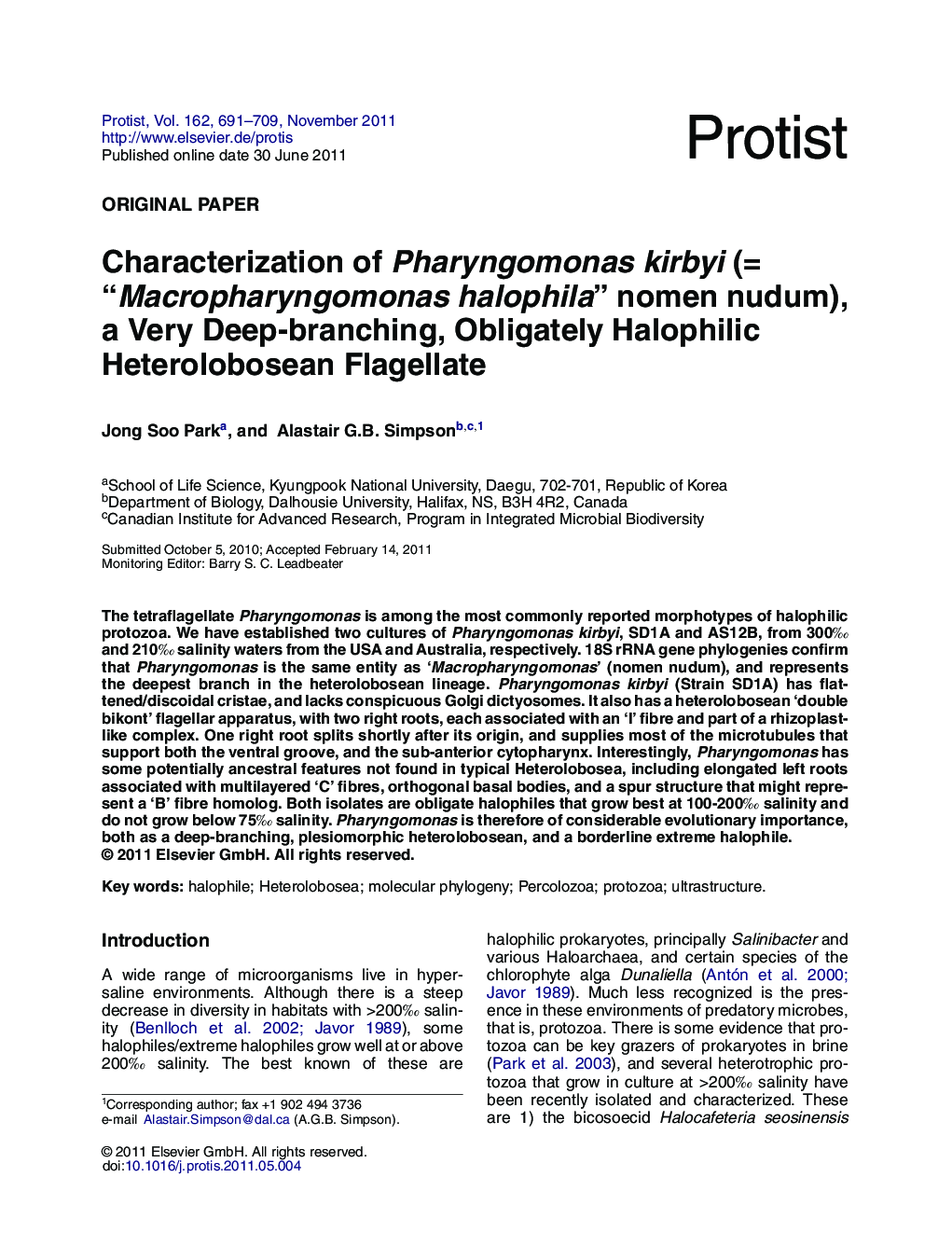| Article ID | Journal | Published Year | Pages | File Type |
|---|---|---|---|---|
| 2062242 | Protist | 2011 | 19 Pages |
The tetraflagellate Pharyngomonas is among the most commonly reported morphotypes of halophilic protozoa. We have established two cultures of Pharyngomonas kirbyi, SD1A and AS12B, from 300‰ and 210‰ salinity waters from the USA and Australia, respectively. 18S rRNA gene phylogenies confirm that Pharyngomonas is the same entity as ‘Macropharyngomonas’ (nomen nudum), and represents the deepest branch in the heterolobosean lineage. Pharyngomonas kirbyi (Strain SD1A) has flattened/discoidal cristae, and lacks conspicuous Golgi dictyosomes. It also has a heterolobosean ‘double bikont’ flagellar apparatus, with two right roots, each associated with an ‘I’ fibre and part of a rhizoplast-like complex. One right root splits shortly after its origin, and supplies most of the microtubules that support both the ventral groove, and the sub-anterior cytopharynx. Interestingly, Pharyngomonas has some potentially ancestral features not found in typical Heterolobosea, including elongated left roots associated with multilayered ‘C’ fibres, orthogonal basal bodies, and a spur structure that might represent a ‘B’ fibre homolog. Both isolates are obligate halophiles that grow best at 100-200‰ salinity and do not grow below 75‰ salinity. Pharyngomonas is therefore of considerable evolutionary importance, both as a deep-branching, plesiomorphic heterolobosean, and a borderline extreme halophile.
